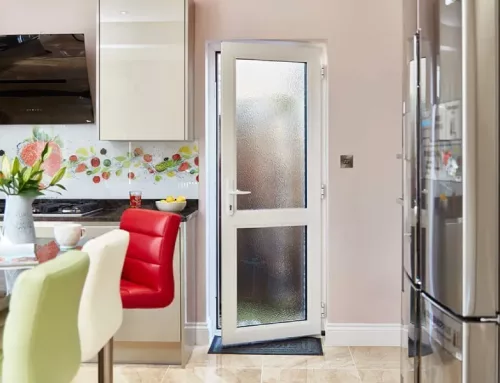uPVC Doors and Windows in Retrofitting Projects: Upgrading Existing Buildings
Retrofitting existing buildings is an important aspect of sustainable development, as it allows for the improvement of energy efficiency, functionality, and aesthetics. uPVC (unplasticized polyvinyl chloride) doors and windows have emerged as a popular choice in retrofitting projects due to their numerous benefits. In this article, we will explore how uPVC doors and windows can be effectively utilized in retrofitting projects, offering a cost-effective and efficient solution to upgrade existing buildings.
1. Energy Efficiency:
Energy efficiency is a key consideration in retrofitting projects, aiming to reduce energy consumption and carbon emissions. uPVC doors and windows are renowned for their excellent thermal insulation properties. By replacing old, inefficient windows and doors with uPVC alternatives, buildings can experience significant improvements in energy efficiency. The multi-chambered design, low conductivity of uPVC profiles, and the option for double or triple glazing help minimize heat transfer, reduce air leakage, and enhance insulation. This upgrade helps to maintain comfortable indoor temperatures, reduce reliance on heating and cooling systems, and lower energy bills.
2. Improved Comfort and Indoor Air Quality:
Older windows and doors may allow drafts, condensation, or noise infiltration, compromising the comfort and well-being of occupants. uPVC doors and windows, with their multi-chambered profiles and weather seals, provide superior insulation against drafts, effectively minimizing temperature fluctuations and ensuring a more comfortable indoor environment. Additionally, uPVC’s resistance to condensation helps prevent moisture-related issues and mold growth, improving indoor air quality and promoting a healthier living space.
3. Enhanced Security:
Security is a paramount concern in retrofitting projects, especially for older buildings. uPVC doors and windows offer improved security features, including multi-point locking systems, reinforced hinges, and impact-resistant properties. By upgrading to uPVC, existing buildings can benefit from enhanced security measures, providing peace of mind for occupants and helping deter potential intruders.
4. Noise Reduction:
For buildings located in noisy urban areas or near busy roads, noise reduction is an essential aspect of retrofitting. uPVC doors and windows have excellent sound insulation properties, helping to minimize noise infiltration and creating a quieter indoor environment. The multi-chambered design and high-quality glazing options significantly reduce external noise, contributing to a more peaceful and comfortable living or working space.
5. Design Flexibility and Aesthetics:
Retrofitting projects often involve updating the aesthetic appeal of buildings. uPVC doors and windows offer a wide range of design options and customization choices. They can be customized to fit existing openings, enabling seamless integration into the building’s architecture. uPVC profiles are available in various colors, finishes, and styles, allowing for design flexibility to match the desired aesthetic vision. Whether the goal is to achieve a modern, contemporary look or preserve the traditional charm, uPVC doors and windows can be tailored to enhance the building’s overall appearance.
6. Low Maintenance Requirements:
Maintenance is an important consideration in retrofitting projects, as it impacts long-term costs and the building’s performance. uPVC doors and windows are known for their low maintenance requirements. They do not require painting, sealing, or frequent repairs. Routine cleaning with mild soap and water is typically sufficient to keep them in excellent condition. The reduced maintenance needs of uPVC contribute to long-term cost savings and make them an attractive choice for retrofitting projects.
Conclusion:
uPVC doors and windows are a highly beneficial choice for retrofitting projects, offering numerous advantages to upgrade existing buildings. The energy efficiency, improved comfort, enhanced security, noise reduction, design flexibility, and low maintenance requirements make uPVC an ideal solution for retrofitting. By replacing old and inefficient windows and doors with uPVC alternatives, buildings can experience significant improvements in energy performance, aesthetics, and functionality. Retrofitting projects that incorporate uPVC doors and windows not only enhance the value and appearance of existing buildings but also contribute to sustainable development and the well-being of occupants.



